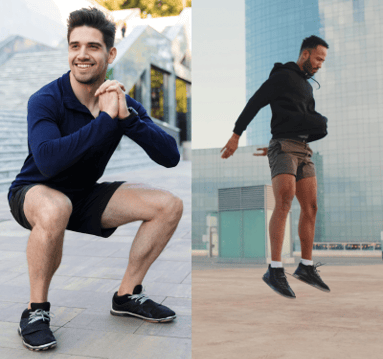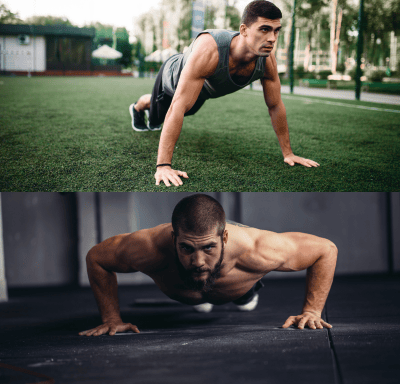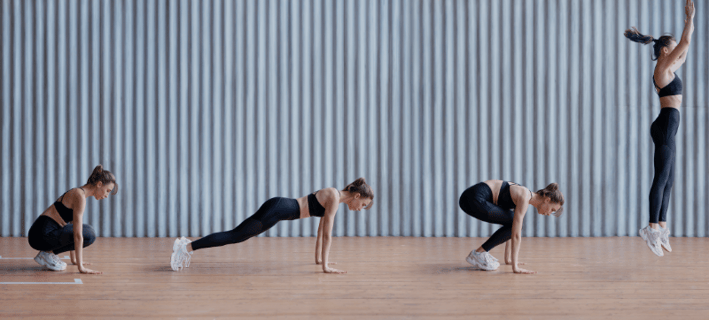Unleash Your Potential: The Ultimate Guide to Total Body HIIT Exercises for Fat Loss and Muscle Gain
WELLNESS


Introduction to HIIT Workouts
High-Intensity Interval Training, commonly referred to as HIIT, is a highly popular workout methodology that alternates short, intense bursts of exercise with rest or low-intensity periods. This training style has gained widespread attention for its effectiveness in burning fat and building muscle, making it an attractive option for individuals with busy schedules. Unlike traditional steady-state cardiovascular workouts, which often require extended periods of exercise, HIIT allows individuals to achieve significant results in shorter durations.
One of the standout features of HIIT workouts is their remarkable ability to elevate the heart rate quickly, thereby promoting increased calorie burn both during and after the session. This is attributed to the concept of excess post-exercise oxygen consumption (EPOC), which refers to the heightened metabolic rate experienced after intense exercise. This means that HIIT workouts not only promote fat loss during the workout but also encourage the body to continue burning calories at an elevated rate for hours afterward.
Moreover, HIIT is adaptable, catering to all fitness levels and preferences. Exercises can range from bodyweight movements, such as squats and jumping jacks, to the use of equipment like kettlebells and resistance bands. Additionally, the flexibility in structure allows individuals to tailor their workouts according to their personal fitness goals, whether it be fat loss, muscle gain, or endurance improvement. This efficiency and customizability make HIIT particularly appealing for those aiming to maximize results in limited time frames.
As fitness enthusiasts continue to look for effective solutions to their training needs, understanding the fundamental components of HIIT—intensity, interval, and recovery—will empower them to leverage this method for optimal benefits. In the sections that follow, we will delve deeper into specific HIIT protocols and exercises designed to enhance fat loss and muscle gain.
What You Need to Get Started
Embarking on a journey with high-intensity interval training (HIIT) requires a few essential components to ensure a successful workout experience. First and foremost, it is crucial to have the appropriate equipment at your disposal. Depending on the specific exercises you intend to perform, items such as dumbbells, resistance bands, and a jump rope are foundational tools that can significantly enhance your workout. Dumbbells allow for strength training and muscle growth, while resistance bands offer versatility in resistance training. A jump rope can be used for cardio, providing an efficient way to elevate your heart rate quickly.
In addition to equipment, workout attire plays an important role in your performance. Wear comfortable and breathable clothing that allows for a full range of motion. Proper footwear is equally important; invest in a good quality pair of athletic shoes that provide support and grip, reducing the risk of injury during dynamic movements.
Space considerations are also vital when planning your HIIT workouts. Ensure that you have sufficient room to perform exercises safely, avoiding any obstacles that could impede your movements. Whether you choose to exercise at home, in a gym, or outdoors, defining a dedicated workout space can help create a focused environment that enhances your training experience.
Nourishing your body and staying hydrated are additional factors that influence performance. Prioritize hydration before, during, and after your workout sessions, as this helps maintain energy levels and improves recovery. A balanced diet abundant in protein, healthy fats, and complex carbohydrates will provide the necessary fuel to support your training endeavors. By combining the right equipment, proper attire, ample space, and a focus on nutrition and hydration, you can establish a solid foundation to unleash your potential with HIIT exercises.
Warm-Up: Preparing Your Body
Before embarking on any high-intensity interval training (HIIT) workout, it is essential to prioritize a thorough warm-up. This preparation phase plays a critical role in enhancing overall performance, increasing blood circulation, and reducing the risk of injuries. A proper warm-up can also boost your flexibility and improve your muscle responsiveness, leading to more effective workouts.
To begin, spend about 5-10 minutes engaging in light aerobic activities such as jogging in place, jumping jacks, or dynamic stretching. These exercises elevate your heart rate, gradually warming up your body and increasing core temperature. For example, start with 2-3 minutes of brisk walking or light jogging, followed by a sequence of dynamic movements.
Next, incorporate dynamic stretches targeting the major muscle groups you will utilize during your HIIT session. The following exercises can be included in your warm-up routine:
Leg Swings: Stand beside a wall for support. Swing one leg forward and backward in a controlled manner for 10-15 repetitions before switching legs. This exercise helps loosen up the hip joints.
Arm Circles: Extend your arms to the side and make small circles, gradually increasing the size. Perform this for about 30 seconds and then switch to the reverse direction.
Lunges with a Twist: Step forward with one leg into a lunge position while twisting your torso towards the front leg. Alternate sides for 8-10 repetitions. This movement engages your core and stretches the leg muscles effectively.
Following these dynamic stretches, take a moment to assess how your body feels. Ensure that you are physically and mentally prepared for the demanding nature of the HIIT workout ahead. By dedicating time to this warm-up routine, you create a solid foundation, enabling you to unleash your potential efficiently during the subsequent exercise sessions.
Total Body HIIT Exercises: Step-by-Step Guide
High-Intensity Interval Training (HIIT) is an effective workout method that combines short bursts of intense exercise followed by brief recovery periods. Below, we outline a series of total body HIIT exercises that promote fat loss and muscle gain. Each exercise includes step-by-step instructions, recommended duration, and rest intervals, ensuring that you can incorporate them into your routine smoothly.
1. Jump Squats
Start by standing with your feet shoulder-width apart. Lower your body into a squat position, pushing your hips back and bending your knees. From the squat, explode upwards into a jump, swinging your arms for momentum. Land softly back into the squat position to minimize impact on your joints. Perform this exercise for 30 seconds, followed by a 15-second rest.
2. Push-Ups
Begin in a plank position with your hands placed slightly wider than shoulder-width. Lower your body until your chest nearly touches the ground, keeping your elbows close to your body. Push back up to the starting position. For a variation, perform knee push-ups if the standard version is too challenging. Aim for 30 seconds of push-ups, resting for 15 seconds after.
3. Burpees
Stand upright, then drop into a squat and place your hands on the ground. Kick your feet back to a plank position and perform a push-up. Quickly return to your squat position and jump explosively into the air, reaching your arms upward. Continue this cycle for 30 seconds, followed by a 15-second break.
4. Mountain Climbers
Start in a plank position with your hands under your shoulders. Drive one knee towards your chest, then quickly switch legs, extending the opposite leg while pulling the knee back. Maintain a fast pace for 30 seconds, followed by a 15-second rest period.
Ensure you perform each exercise with correct form to avoid injury and maximize benefits. Incorporating these total body HIIT exercises into your fitness routine will not only help in fat loss but will also promote muscle gain. By adjusting the intervals and repetitions based on your fitness level, you can create a personalized HIIT workout that suits your needs.
Structuring Your HIIT Workout: Example Routines
Incorporating High-Intensity Interval Training (HIIT) into your fitness routine can significantly enhance your fat loss and muscle gain goals. To facilitate your journey, we present structured HIIT workout routines suitable for various fitness levels: beginner, intermediate, and advanced. These routines can be easily tailored to fit your personal fitness regimen.
For beginners, a suggested routine could involve a 20-minute session comprising the following exercises: 30 seconds of bodyweight squats followed by a 30-second rest, then 30 seconds of modified push-ups with another 30 seconds of rest. Next, 30 seconds of high knees can be performed, again followed by 30 seconds of rest. Completing this cycle for four rounds builds endurance while reducing injury risk. The total time dedicated to this beginner routine remains manageable, allowing for effective adaptation to the HIIT format.
As fitness levels progress, the intermediate routine could extend to 30 minutes and incorporate exercises such as burpees, mountain climbers, and jumping lunges. In this routine, participants should aim for 40 seconds of exertion with 20 seconds of rest between exercises. A typical circuit may include 40 seconds of burpees, followed by 20 seconds of rest, continued by 40 seconds of mountain climbers, 20 seconds of rest, and concluding with 40 seconds of jumping lunges. This will ensure a comprehensive workout focusing on strength, cardiovascular endurance, and flexibility.
For an advanced HIIT experience, consider a 40-minute routine that manipulates both intensity and duration, focusing on complex movements. A sample could include kettlebell swings, box jumps, and battle ropes, performed in a Tabata format—20 seconds of maximum effort followed by 10 seconds of rest for a total of eight rounds per exercise. This extreme variation engages different muscle groups and pushes the limits of both fat loss and muscle gain.
Adjusting rest periods and durations accordingly is crucial for maximizing the benefits of your HIIT workout. By mixing and matching these exercises, you not only obtain variety but also ensure a challenging experience that can drive your fitness results forward.
Cool Down and Stretch: Recovery is Key
Engaging in high-intensity interval training (HIIT) can significantly boost fat loss and promote muscle gain. However, an often overlooked aspect of this rigorous exercise routine is the importance of cooling down and stretching after the workout. Cooling down helps to gradually lower your heart rate and restore your body to its pre-exercise state, which is crucial for recovery and preventing muscle soreness. It is essential to incorporate an effective cool-down routine that complements your HIIT sessions.
A proper cool-down generally consists of two components: a low-intensity activity followed by targeted stretching. Start by transitioning from your intense HIIT exercises to a slower-paced activity such as walking or light jogging for about 5-10 minutes. This helps in gradually reducing your heart rate while keeping blood circulation active, thereby minimizing the risk of dizziness or fainting.
After your heart rate has stabilized, it is time to incorporate static stretches into your cool-down routine. Focus on stretching the major muscle groups that were engaged during your workout, such as the quadriceps, hamstrings, glutes, and shoulders. Hold each stretch for at least 15-30 seconds, breathing deeply to enhance relaxation. For instance, a quad stretch can be done by standing on one leg while pulling the opposite foot towards your glutes. Similarly, for the hamstring stretch, sit with one leg extended and the other leg bent, reaching towards your toes. These stretches not only promote flexibility but also aid in muscle recovery, allowing for better performance in subsequent workouts.
Incorporating a cool-down and stretching routine into your HIIT exercises is vital for an optimal recovery process. Doing so can enhance flexibility, prevent stiffness, and help you feel refreshed post-workout. By prioritizing your cooldown phase, you are taking a significant step towards achieving your fitness goals effectively and sustainably.
Tips for Success and Staying Motivated
Embarking on a journey into total body HIIT exercises for fat loss and muscle gain can be both exhilarating and challenging. To sustain motivation and ensure success, it is crucial to set realistic and achievable goals. Start by defining what you want to achieve, whether it’s shedding a specific amount of weight, increasing endurance, or building muscle tone. Break down these larger objectives into smaller, measurable milestones that can be celebrated as you progress. This will provide a sense of accomplishment and encourage you to stay focused.
Tracking your progress is another essential component of maintaining motivation. Consider keeping a workout journal or using a fitness app to record your sessions, details about the exercises performed, and any physical changes observed. This not only allows you to quantify your progress but also serves as a motivational reminder of how far you’ve come in your fitness journey. Seeing improvements, whether it be in weight lifted or duration of workouts, can ignite your enthusiasm to continue pushing forward.
Finding workout buddies can significantly enhance your experience with HIIT workouts. Exercising with a partner adds an element of accountability and camaraderie, making workouts more enjoyable. You can motivate each other during challenging sessions, share tips and experiences, and even engage in some friendly competition. This social aspect can keep you engaged and committed to your routine.
Diversity in your training routine is another key factor to stave off boredom and fatigue. Incorporate different types of HIIT workouts incorporating various exercises and practices such as yoga, Pilates, or dance. This variety can keep your body guessing and may lead to improved results. Lastly, remember that everyone's fitness journey is unique. Embrace your path, stay focused on your goals, and celebrate every step you take towards unleashing your potential.










